| 103rd Attack Squadron | |
|---|---|
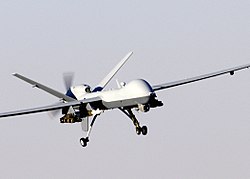 MQ-9 Reaper in flight MQ-9 Reaper in flight | |
| Active | 27 June 1924 – Present |
| Country | |
| Allegiance | |
| Branch | |
| Type | Squadron |
| Part of | Pennsylvania Air National Guard |
| Garrison/HQ | Naval Air Station Joint Reserve Base Willow Grove, Willow Grove, Pennsylvania |
| Nickname(s) | Black Hogs |
| Tail Code | PA |
| Engagements | World War II |
| Insignia | |
| 103rd Fighter Squadron emblem |  |
| 103rd Observation Squadron emblem (approved 10 April 1931) | 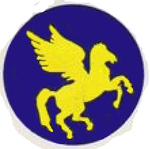 |
The 103rd Attack Squadron (103 ATKS) is an active unit of the Pennsylvania Air National Guard previously known as the 103rd Fighter Squadron (103 FS). It is assigned to the 111th Attack Wing, stationed at Naval Air Station Joint Reserve Base Willow Grove, Willow Grove, Pennsylvania. The squadron was inactivated on 31 March 2011 and later reactivated as the 103rd Attack Squadron at the new Horsham Air Guard Station, on the grounds of the former Naval Air Station Joint Reserve Base Willow Grove. Along with these name changes came a change of mission. The 103rd Attack Squadron now flies the MQ-9 Reaper Remotely Piloted Aircraft.
The squadron was a descendant organization of the Pennsylvania National Guard 103rd Observation Squadron, formed on 27 June 1924. It was one of the 29 original National Guard Observation Squadrons of the United States Army National Guard formed before World War II.
History
Pennsylvania National Guard
The Militia board authorized the Pennsylvania National Guard 103rd Observation Squadron in June 1924. The 103rd was founded and eventually commanded by Major Charles J. Biddle, who had flown in World War I as part of the famous American volunteer Lafayette Escadrille. This new National Guard squadron was based on the sod fields of Philadelphia Airport as a unit in the Army 28th Division.
The pilots of the 103rd flew a wide variety of observation aircraft for the next 18 years. The most well-known of these aircraft was the JN-4 Jenny. The Jenny was an open-cockpit bi-plane; but was replaced in the 1930s and early 1940s with metal-skinned, prop-driven observation monoplanes. The list is long but shows the steady improvement in aircraft: PT-1, BT-1, O-1, O-2H, O-11, O-38, O-46,-47A, O-47B, O-49, O-52, O-57 and P434-1. The squadron also flew liaison aircraft such as the L-4 and L-1B.
The squadron conducted summer training at Langley Field, Virginia, 1924–27 and Middletown Air Depot, Pennsylvania, 1928–40. They also flew reconnaissance operations in support of the 28th Division and 5nd Cavalry Brigade during summer training; flew tracking missions for the 213th Coast Artillery Regiment (AA); and flew spotter missions for the 107th, 108th, 109th, and 176th Field Artillery Regiments at Tobyhanna Firing Range. The entire squadron was called up to support flood relief efforts in central and eastern Pennsylvania in March–April 1936.
World War II
Inducted into active Federal service 17 February 1941 at Philadelphia, and transferred to the Harrisburg Municipal Airport, arriving there 27 February 1941.
In February 1941, as the war in Europe raged, the unit was ordered to active service, performing antisubmarine patrols off the coast of New England. In 1943, the 103rd finally moved into the latest combat aircraft. First, the pilots and maintenance personnel were given steady upgrades in equipment beginning with the P-39 Airacobra, P-40 Warhawks, and then the B-25 Mitchell. Eventually this culminated in training on the photo-reconnaissance variant of the P-38 Lightning called the F-5C. The twin-engine F-5C had all of the P-38's guns replaced by cameras.
After a year's worth of training, the 103rd deployed to the China-Burma-India (CBI) Theater of war in 1944 where it operated out of various fields in India and Burma. It was heavily involved in photo reconnaissance activities over Burma, supporting the US Army forces fighting the Japanese in the jungles there. The 103rd personnel stayed in that theater until the end of the war.
Pennsylvania Air National Guard
The wartime 40th Photographic Reconnaissance Squadron was re-designated as the 103rd Bombardment Squadron and allotted to the Pennsylvania Air National Guard, on 24 May 1946. It was organized at Philadelphia International Airport, and was extended federal recognition on 20 December 1948 by the National Guard Bureau. The 103rd Bombardment Squadron was bestowed the history, honors, and colors of the 40th PRS. The squadron was equipped with B-26 Invader light bombers and assigned to the 111th Bombardment Group.
Korean War Activation
The 103rd was federalized on 10 October 1950 along with its parent 111th Composite Wing due to the Korean War. Many of the pilots and maintenance personnel were split off and sent for duty overseas as individuals assigned to other combat units there. Eventually the B-26 bombers were sent as reinforcement aircraft to Far East Air Force for use in Korea.
On 10 April 1951 the squadron and Wing were moved to Fairchild AFB, Washington and re-equipped with RB-29 Superfortress reconnaissance aircraft. Based on the World War II B-29 Bomber, the RB-29s were instead configured with multiple aerial cameras for mapping and reconnaissance missions. These RB-29s were used like the reconnaissance satellites of today, except they required actual over flight of the countries to be photographed.
On 13 June 1952, two 111th pilots were flying an RB-29 over the Soviet Union when they were shot down by a pair of MiG-15s. The RB-29 was never recovered, having crashed in the waters off of Vladivostok, Russia. The Pennsylvanian families of the Air Guard pilots were told they had simply "vanished" in a weather-reconnaissance flight near Japan. It wasn't until the fall of the Soviet Union and the opening of communist archives that the relatives found out the truth in 1993. It is unknown as to whether any of the pilots or crew of this aircraft were captured by the Soviets at that time.
Cold War Air Defense


The 103rd and the 111th were returned to control of the Pennsylvania Air National Guard in late November 1952, and the units were re-formed at Philadelphia International Airport by 1 January 1953. The 103rd was re-equipped with the F-51D Mustang World War II fighter because of a lack of available jets at the time due to the Korean War. It was re-designated as the 103rd Fighter Bomber Squadron and assumed an air defense mission. In 1955, Air Defense Command upgraded the group to the F-84F Thunderstreak, and it received new aircraft. In July 1956, the 103rd FIS switched to F-94A and B Starfigher interceptors; to F-94Cs in 1958 and the F-89H Scorpion in 1959.
Airlift mission
In 1962, the unit transitioned from the F-89J jet interceptor to a large, heavy transport, the Boeing C-97 Stratofreighter, a double-decked, four-engine airplane. The new mission moved the wing into the Military Air Transport Service (MATS), and its successor Military Airlift Command (MAC) in 1966.
In 1963, the 111th ended its 39-year history at Philadelphia airport and moved to brand new facilities on the north end of the Willow Grove Naval Air Station. From Willow Grove, the C-97 was used to transport troops and cargo all over the world. The unit's flying personnel were used heavily during the Vietnam War and over two hundred members earned Vietnam Service Medals for their flights into that war zone.
Airborne Forward Air Control
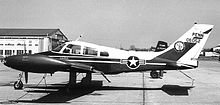

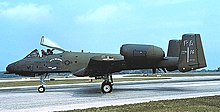
In 1969, the unit changed mission yet again, returning to its original roots as an observation unit. The new 111th Tactical Air Support Group initially flew the U-3A Blue Canoe, a Cessna-310, as an intermediate aircraft until it received the aircraft it needed for Airborne Forward Air Control (AFAC): the O-2A Skymaster. The O-2 was a two propeller aircraft used early in the Vietnam War for coordination between ground forces and fighter aircraft (the "O" stands for observation).
The Forward Air Control mission was sustained with the unit's switch to the OA-37 Dragonfly in 1981. The OA-37, was a heavier derivative of the T-37 trainer, and had been developed specifically for the Vietnam War. The unit made several deployments to Central America in the 1980s to fly with US allies there, who had been sold the A-37 as part of the US Foreign Military Sales program.
The A-37s were retired in 1988, and the 111th received the A-10A Thunderbolt II ground support aircraft. It was also used as a FAC aircraft (OA-10). Pilots continued their previous mission of providing AFAC and Combat Search and Rescue, although in a much more combat-hardened attack plane. The A-10 allowed the wing to take part in the new deployments to Southwest Asia following Operation Desert Storm. The unit was re-designated as the 111th Fighter Group in 1992 and then as the 111th Fighter Wing in 1995.
Participating in Operation Southern Watch, the wing took advantage of this aircraft upgrade by volunteering for a 90-day deployment to Kuwait in 1995, to support joint combat flight operations for Operation Southern Watch over Iraq. Twelve aircraft were deployed to Al Jaber AB – a joint-use base by U.S. and Kuwait Air Forces. The base was fairly austere as it had suffered considerable war-damage from Desert Storm. Missions included Combat Search and Rescue alert, Kill Box flights over Iraq, Airborne Forward Air Control and joint training missions over Kuwait. About 40% of the wing participated in the deployment
Another interesting element was a small side deployment to Qatar. The 111th was the first Air Guard fighter unit deployed to Al Jaber and also the first ANG Wing to volunteer for a solo 3-month Operation Southern Watch deployment. The combat flight missions over Iraq were to enforce United Nations resolutions and occurred during the 1990s post Cold War era.
Ground Support
In 1996, the 111th FW pilots transitioned from the OA-10 AFAC mission to the universal A-10 "attack" mission. Now the pilots' primary task was to provide Close Air Support (CAS) for joint service ground forces, as well as performing AFAC and CSAR duties as before. This change to the normal A-10 role aligned the wing with all the other A-10 units in the active duty and Air Reserve Component (ARC).
The second 111th FW deployment to Al Jaber AB occurred in 1999, again to support joint combat flight operations for Operation Southern Watch over Iraq. Missions included Combat Search and Rescue alert, Kill Box flights over Iraq, Airborne Forward Air Control and joint training missions over Kuwait. Use of the A-10 was more limited than before, due to the aircraft's relative lack of a precision weapon capability .
Global War on Terrorism
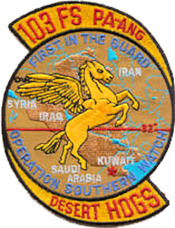
Immediately following the 9/11 attacks on NYC and Washington, DC, the 111th FW voluntarily deployed on very short notice back to Al Jaber AB to support joint combat flight operations for Operation Southern Watch over Iraq and Operation Enduring Freedom over Afghanistan. Missions included Combat Search and Rescue alert and joint training missions over Kuwait. 111th Weapons personnel assisted in the loading of combat ordnance for the first sorties into Afghanistan in November, 2001.
From October 2002 – January 2003, the wing was the lead unit for a short notice, voluntary, out-of-cycle AEF deployment to Bagram AB, Afghanistan. Bagram had been a massive Soviet base during the decade when they occupied Afghanistan (1979–89), but was almost completely destroyed in that period and civil war afterwards. The 111th aircraft supported joint combat flight operations with US Army, Special Forces, and coalition ground forces in Afghanistan. The A-10s were flown and maintained in the most primitive conditions, yet the 111th personnel flew 100% of the assigned tasking for their entire deployment – at four times the normal sortie rate of home. Other unique aspects of the operation were total 'blacked out' night-time operations (no lights on the field or camp – everything was done by night vision goggles); an extensive number of mines/UXOs around and on the air field; extreme weather conditions and enemy shelling using BM-12 107mm rockets.
Operation Iraqi Freedom

Upon returning to the U.S. in January 2003, the 111th FW again volunteered to participate in another SWA deployment to Al Jaber AB, Kuwait from February 2003 – May 2003. The wing deployed for joint combat flight operations, in support of US Army, Marine and British ground forces as part of the initial phase of Operation Iraqi Freedom. Wing personnel were initially stationed at Al Jaber before transferring to Tallil AB, Iraq, midway through the initial campaign. Tallil was a former Iraqi air force base, which had not been used in a decade.
During this campaign, which included direct support for coalition armor forces during the entire invasion from the Kuwait border, through Basra and Baghdad, the wing pilots and maintainers successfully operated at a very high sortie rate. Tallil AB operations set another milestone due to its austere nature and forward location (which was essential to support the armor's thrust toward the capital).
The 111th Fighter Wing's achievement of voluntarily deploying to austere bases in two separate combat operations within a five-month period was part of the reason the unit was awarded the Air Force Outstanding Unit Award, with Valor, in 2005. It also was awarded the Reserve Family Readiness Award in 2003 and the ANG Distinguished Flying Unit Award in 2004.
Transition to UAVs, 2011-2013
In its 2005 Base Realignment and Closure Commission recommendations, DoD recommended the 111th Fighter Wing be inactivated and its assigned A-10 aircraft reassigned to the 124th Wing (ANG), Boise Air Terminal Air Guard Station, Boise, ID (three primary aircraft); 175th Wing (ANG), Warfield Air National Guard Base, Baltimore, MD, (three primary aircraft); 127th Wing (ANG), Selfridge Air National Guard Base, Mount Clemens, MI (three primary aircraft) and retire the remaining aircraft (six primary aircraft).
This recommendation was part of a larger recommendation that would close NAS JRB Willow Grove. DoD claimed that this recommendation would enable Air Force Future Total Force transformation by consolidating the A-10 fleet at installations of higher military value. Despite appeals from Ed Rendell, the Governor of Pennsylvania, the recommendations were upheld and the A-10s departed during 2010. The 103d Fighter Squadron inactivated on 31 March 2011.
On 7 June 2014, during the Pennsylvania ANG's annual Flight of Freedom event, the wing was formally redesignated from the 111th Fighter Wing to the 111th Attack Wing, and the 103rd Fighter Squadron became the 103rd Attack Squadron.
The renamed 103rd Attack Squadron officially reached initial operational RPA capability with the launch of its first combat air patrol sortie at Horsham AGS on 3 April 2016.
Lineage



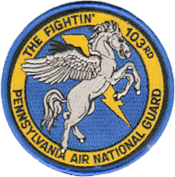
- Constituted and allotted to the National Guard in 1921 as the 103rd Squadron (Observation)
- Redesignated 103rd Observation Squadron on 25 January 1923
- Organized and extended federal recognition on 27 June 1924
- Ordered to active service on 17 February 1941
- Redesignated 103rd Observation Squadron (Medium) on 13 January 1942
- Redesignated 103rd Observation Squadron on 4 July 1942
- Redesignated 103rd Reconnaissance Squadron (Fighter) on 2 April 1943
- Redesignated 103rd Tactical Reconnaissance Squadron on 11 August 1943
- Redesignated 40th Photographic Reconnaissance Squadron on 21 October 1943
- Inactivated on 2 November 1945
- Redesignated 103rd Bombardment Squadron, Light and allotted to the National Guard on 24 May 1946
- Extended federal recognition on 20 Dec 1948
- Ordered into active service on 1 April 1951
- Redesignated 103rd Strategic Reconnaissance Squadron, Medium, Photographic on 1 August 1951
- Redesignated 103rd Strategic Reconnaissance Squadron, Medium on 16 June 1952
- Redesignated 103rd Strategic Reconnaissance Squadron, Heavy on 16 October 1952
- Relieved from active duty and returned to state control. on 1 January 1953
- Redesignated 103rd Fighter-Bomber Squadron and activated on 1 January 1953
- Redesignated 103rd Fighter-Interceptor Squadron on 1 May 1955
- Redesignated 103rd Air Transport Squadron Heavy on 1 April 1962
- Redesignated 103rd Military Airlift Squadron on 1 January 1966
- Redesignated 103rd Tactical Air Support Squadron on 27 May 1969
- Redesignated 103rd Fighter Squadron on 15 Mar 1992
- Inactivated on 31 March 2011
- Redesignated 103rd Attack Squadron
- Activated c. 7 June 2014
Assignments
- 28th Division Air Service (later 28th Division Aviation), 27 June 1924
- 315th Observation Group, 15 February 1929 (attached to 28th Division)
- 43rd Observation Group, 1 October 1933 (attached to 28th Division)
- II Corps, 17 February 1941
- 59th Observation Group, 1 September 1941
- 26th Observation Group (later 26th Reconnaissance Group, 26th Tactical Reconnaissance Group), 18 October 1942
- III Reconnaissance Command, 21 October 1943
- I Tactical Air Division (later III Tactical Air Division), 18 April 1944
- Army Air Forces, India-Burma Sector, 3 June 1944
- Tenth Air Force, 5 July 1944
- 8th Photographic Group (later 8th Reconnaissance) Group), 18 July 1944 – 2 November 1945
- 111th Bombardment Group (later 111th Composite Group, 111th Bombardment Group, 111th Strategic Reconnaissance Group), 20 December 1948
- 111th Strategic Reconnaissance Wing, 16 June 1952 – 1 January 1953
- 111th Fighter-Bomber Group (later 111th Fighter-Interceptor Group, 111th Fighter Group, 111th Air Transport Group, 111th Military Airlift Group, 111th Tactical Air Support Group, 111th Fighter Group, 111th Operations Group), 1 January 1953 – 31 March 2011
- 111th Operations Group, c. 7 June 2014
Stations
|
|
Aircraft
|
|
See also
References
Notes
- Maurer, Combat Squadrons, p. 188
- "111th Attack Wing History".
- "111th Attack Wing reaches MQ-9 initial operational capability". 4 April 2016.
- Lineage through 1924 in Clay, p. 1441. Maurer uses the term "activated", for the 1924 action but does not address the unit's authorization/constitution. Maurer, Combat Squadrons, p. 188.
- Lineage through May 1946 in Maurer, Combat Squadrons, except as noted.
- ^ Botzum, MSG Christopher (12 June 2014). "Oldest flying unit in Pennsylvania turns 90 years old, redesignates to match new mission". 111th Attack wing Public Affairs. Retrieved 13 February 2019.
- Clay, p. 1274
- Assignments through 1940 in Clay, p. 1441, except as noted.
- Maurer, Combat Units, p. 188. Clay says assignment to II Corps began before the unit was mobilized, on 30 December 1940.
- Assignments through May 1946 in Maurer, Combat Squadrons, except as noted.
- Clay, p. 1441
- Stations through May 1946 in Maurer, Combat Squadrons, except as noted.
- William J Brenell (Spring 2004). "The Known North American O-47 Assigned to Pre-World War II Air National Guard Squadrons". AAHS Journal.
Bibliography
![]() This article incorporates public domain material from the Air Force Historical Research Agency
This article incorporates public domain material from the Air Force Historical Research Agency
- Clay, Steven E. (2011). US Army Order of Battle 1919–1941 (PDF). Vol. 3 The Services: Air Service, Engineers, and Special Troops 1919–1941. Fort Leavenworth, KS: Combat Studies Institute Press. ISBN 978-0-98419-014-0. LCCN 2010022326. OCLC 637712205. Archived from the original (PDF) on 27 September 2013. Retrieved 16 October 2012.
- Cornett, Lloyd H; Johnson, Mildred W (1980). A Handbook of Aerospace Defense Organization, 1946–1980 (PDF). Peterson AFB, CO: Office of History, Aerospace Defense Center. Archived from the original (PDF) on 13 February 2016. Retrieved 23 March 2012.
- Maurer, Maurer, ed. (1983) . Air Force Combat Units of World War II (PDF) (reprint ed.). Washington, DC: Office of Air Force History. ISBN 0-912799-02-1. LCCN 61060979. Retrieved 17 December 2016.
- Maurer, Maurer, ed. (1982) . Combat Squadrons of the Air Force, World War II (PDF) (reprint ed.). Washington, DC: Office of Air Force History. ISBN 0-405-12194-6. LCCN 70605402. OCLC 72556. Retrieved 17 December 2016.
- Rogers, Brian. (2005). United States Air Force Unit Designations Since 1978. Hinkley, UK: Midland Publications. ISBN 1-85780-197-0.
External links
| |||||||||||||||||||||||||||||||||||||||||||||||||||||||||||||||||||||
| |||||||||||||||||||||||||||||||||||||||||||||||||||||||||||||||||||||
| United States Air Force | |||||||||||
|---|---|---|---|---|---|---|---|---|---|---|---|
| Leadership |  | ||||||||||
| Structure |
| ||||||||||
| Personnel and training | |||||||||||
| Uniforms and equipment | |||||||||||
| History and traditions |
| ||||||||||



